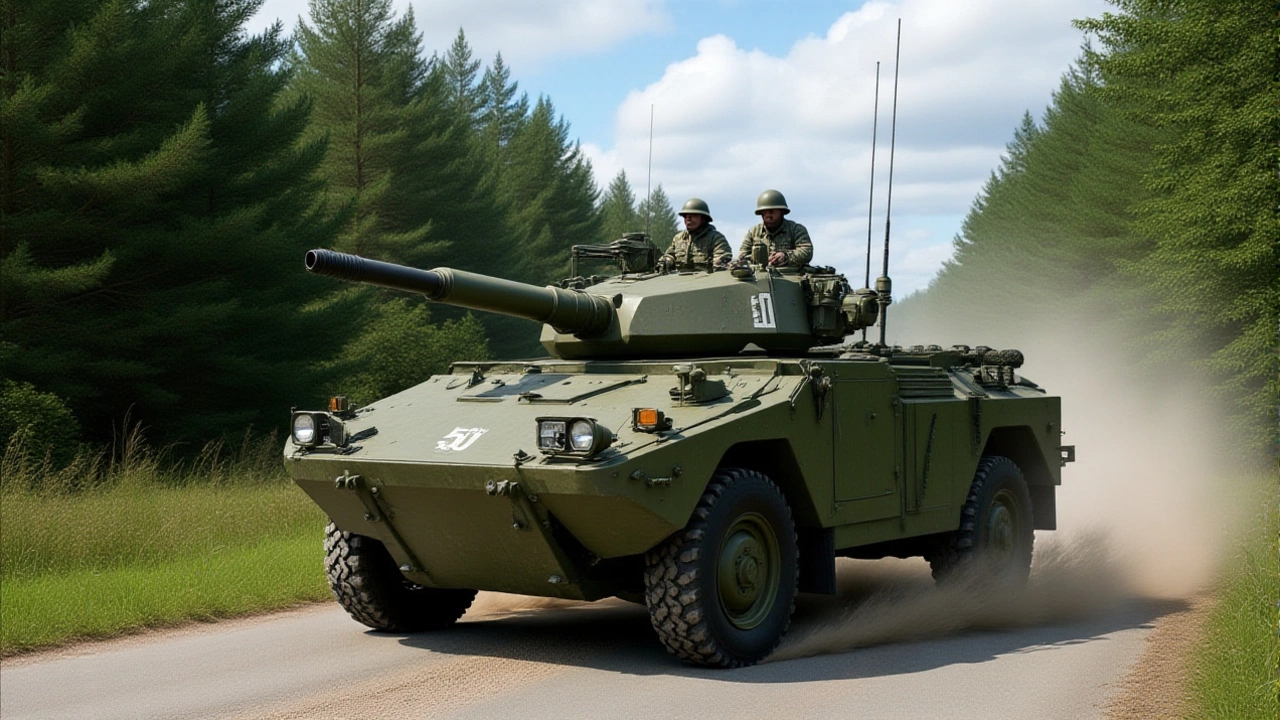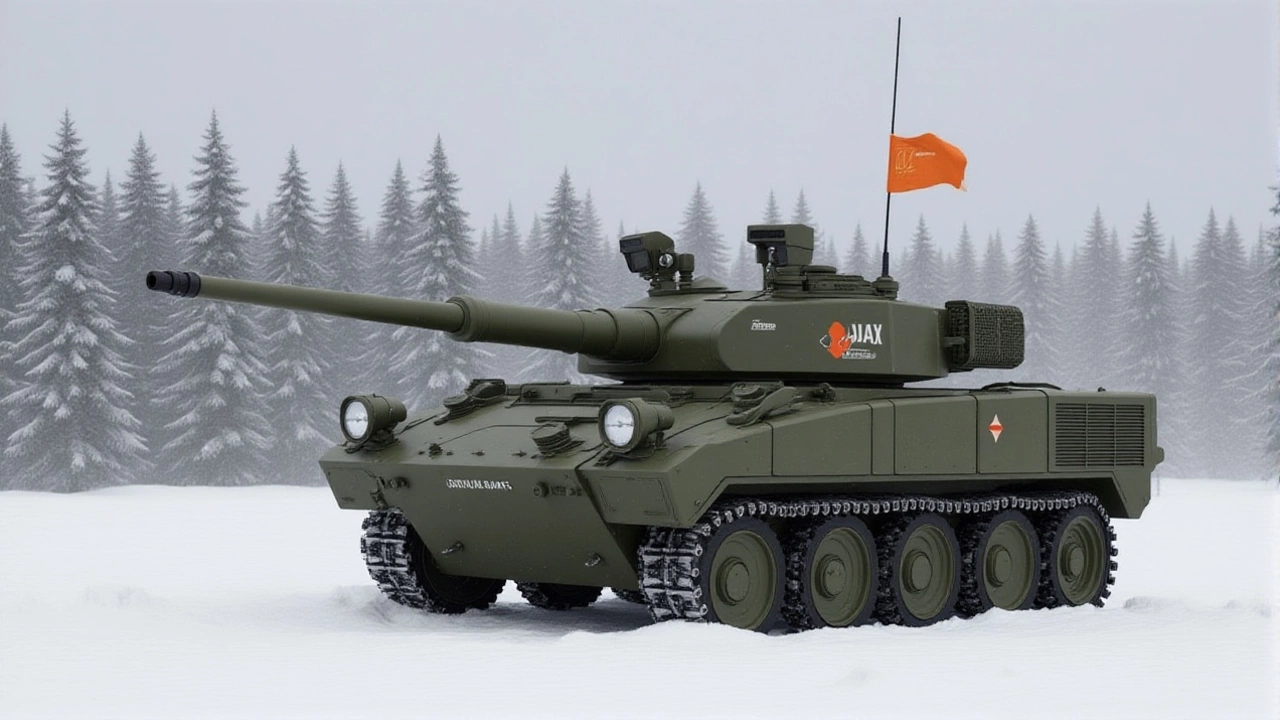On Wednesday, November 6, 2025, the British Army officially declared the Ajax armoured fighting vehicle operational—marking the first new armoured vehicle to enter service in nearly three decades. The milestone, known as Initial Operating Capability (IOC), means a full squadron of Ajax vehicles can now deploy on active missions. Built in Merthyr Tydfil, Wales, by General Dynamics UK Limited in partnership with the Defence Equipment & Support (DE&S), the Ajax isn’t just a military upgrade—it’s a national industrial achievement that’s kept over 4,100 workers employed across more than 230 UK companies.
More Than Just a Tank: A Technological Leap
Forget everything you thought you knew about armoured vehicles. The Ajax doesn’t just carry troops—it redefines how they see, feel, and react to the battlefield. For the first time, all crew positions—not just the commander—have 360-degree situational awareness. Drivers no longer rely on periscopes or narrow views. Instead, they navigate using real-time, high-resolution feeds from cameras mounted around the hull, fed directly into their displays. It’s like having a drone hovering above your vehicle, but inside your helmet.
Capt John Hutton of the Household Cavalry Regiment, who’s driven everything from the aging Scorpion to the new Ajax, put it bluntly: "Driving AJAX is a really noticeable step change... the control mechanism, the responsiveness, the awareness—it’s unlike anything I’ve driven before." That’s not marketing fluff. That’s a soldier who’s spent years in the dirt and now says this thing actually feels alive.
The vehicle’s 40mm cannon has fired over 20,000 rounds during testing. It’s been driven more than 42,000 kilometres—equivalent to circling the Earth. It’s been tested in Arctic cold and desert heat. It’s been fired while moving over rough terrain. And it passed every test. No major redesigns. No delays. Just relentless validation.
A National Effort, Built in Wales
The Ajax isn’t assembled in some distant factory. It’s built in the heart of South Wales, where the steel mills and engineering heritage of Merthyr Tydfil have been reborn as a high-tech defence hub. Over 230 suppliers—from small machine shops in Yorkshire to electronics firms in Scotland—contribute parts. This isn’t a single plant project. It’s a UK-wide economic engine.
"Ajax represents a transformational capability for UK defence, delivered by thousands of skilled workers across Britain," said Rupert Pearce, UK National Armaments Director. "It strengthens our Armed Forces whilst driving economic growth."
Maj Gen Anna-Lee Reilly, Director Core at DE&S, added: "This UK-designed and built capability demonstrates how defence investment strengthens both our national security and our economy."
And it’s not just about jobs today. It’s about skills tomorrow. Young engineers in Cardiff, welders in Stoke-on-Trent, software coders in Belfast—they’re all learning systems that will be exported, upgraded, and replicated for decades.

Why This Matters Beyond the Battlefield
The Ajax isn’t just a vehicle. It’s a symbol of Britain’s renewed defence ambition. It’s the first major delivery under the government’s £41 billion, ten-year plan to modernise the British Army—a plan that includes precision missiles, autonomous drones, and digital battlefield networks. The Ajax is the anchor of that transformation.
"Defence is an engine for growth," said Luke Pollard MP, Minister for Defence Readiness and Industry. "We're exploring the potential to export AJAX."
That’s the quiet bombshell. If the Ajax can be sold to allies—NATO partners, Gulf states, even democracies in Asia—it could become Britain’s next major defence export, like the Typhoon fighter jet or the Storm Shadow missile. And unlike those platforms, the Ajax is built with modern digital architecture. It’s designed to be upgraded, not replaced.
For decades, Britain imported its armoured vehicles. Now, it’s exporting its capability. And it’s doing it with British steel, British software, and British ingenuity.

What’s Next? Deployment and Diplomacy
With IOC confirmed, the first Ajax squadrons will begin field training in early 2026, with operational deployments expected by mid-year. The British Army’s 1st Deep Reconnaissance Strike Brigade will be the first to receive them. But the real test won’t be in exercises—it’ll be in the field. Will the vehicle hold up under live fire? Will the sensors jam under electronic attack? Will the crew trust it in a dust storm?
Those answers are coming. And they’ll be watched closely—not just by the Army, but by global defence analysts.
The Ajax isn’t just replacing old hardware. It’s setting a new standard. For the first time since the Challenger 2 entered service in the 1990s, the British Army has a vehicle built for the 21st century—not the 20th. And it’s built right here.
Frequently Asked Questions
How does the Ajax improve soldier safety compared to older armoured vehicles?
The Ajax provides 360-degree digital vision to every crew member, eliminating blind spots that have cost lives in past conflicts. Its advanced composite armour and active protection systems are designed to deflect RPGs and anti-tank missiles, while its digital architecture allows for real-time threat alerts. Unlike older vehicles where drivers had to rely on physical periscopes, Ajax crews operate with near-total situational awareness—even at night or in smoke.
Why is the Ajax being built in Merthyr Tydfil, and what’s the economic impact?
Merthyr Tydfil was chosen for its deep engineering heritage and skilled workforce. The Ajax program directly supports over 4,100 jobs across 230 UK suppliers, from Wales to Northern Ireland. It’s revitalised local supply chains, with over £1.2 billion already injected into the UK economy. This isn’t just manufacturing—it’s skills training, apprenticeships, and long-term industrial resilience.
What testing did the Ajax undergo before being declared operational?
The Ajax endured over 42,000 kilometres of battlefield driving, more than 20,000 rounds fired from its 40mm cannon, and extreme climate trials—from -30°C Arctic conditions to 50°C desert heat. It was tested for electromagnetic interference, underwater fording, and high-speed manoeuvres over rough terrain. Every system was stress-tested beyond operational requirements. No major flaws were found after six years of evaluation.
Can the Ajax be exported, and which countries might buy it?
Yes, the UK government is actively exploring export opportunities. Potential buyers include NATO allies like Poland and Romania, Gulf states such as Saudi Arabia and the UAE, and democracies in Southeast Asia seeking modern armoured platforms. Its modular design and digital architecture make it adaptable to different combat doctrines, giving it a competitive edge over older Russian or American designs.
How does the Ajax fit into Britain’s broader defence strategy?
The Ajax is the cornerstone of the British Army’s shift toward ‘overmatch’—using technology to dominate adversaries. It’s part of a £41 billion modernisation plan that includes drones, cyber capabilities, and networked artillery. Ajax enables precision reconnaissance and rapid strike, allowing smaller units to act with greater lethality. It’s not just about having better armour—it’s about fighting smarter.
What’s the timeline for full operational capability?
Initial Operating Capability (IOC) was declared in November 2025. Full Operational Capability (FOC) is expected by late 2027, when all six variants—reconnaissance, command, ambulance, and others—will be fully integrated into frontline units. Production will continue through 2030, with over 500 vehicles planned for delivery to the British Army.




